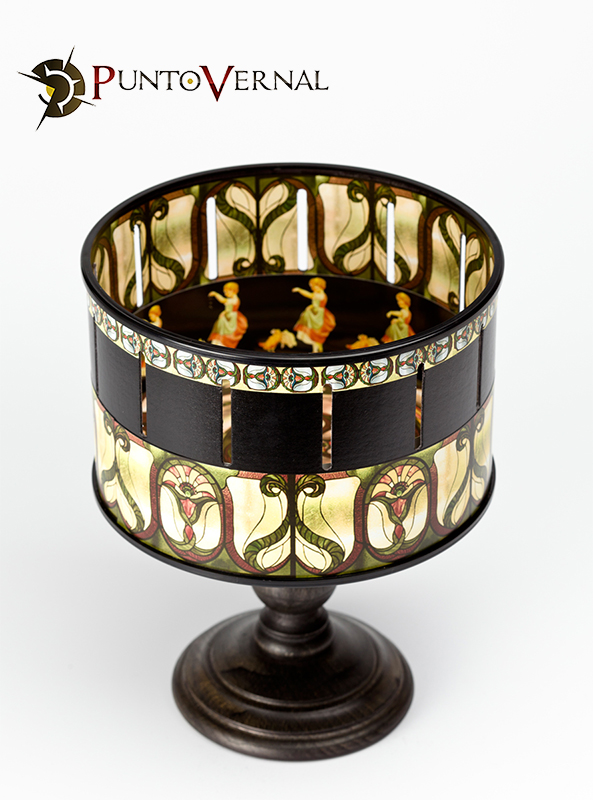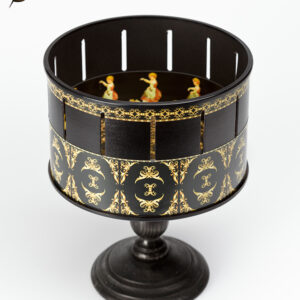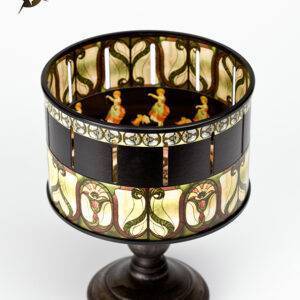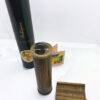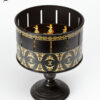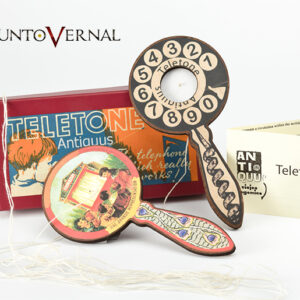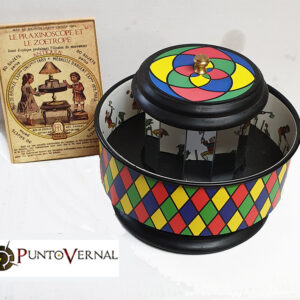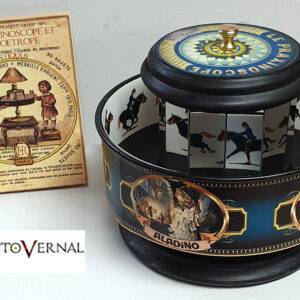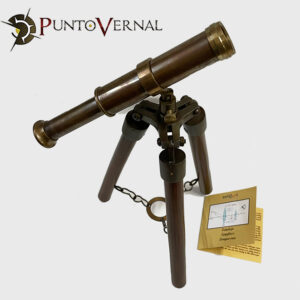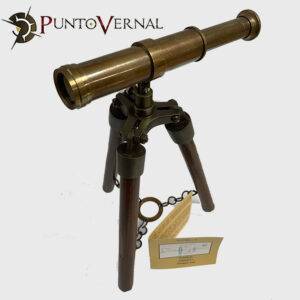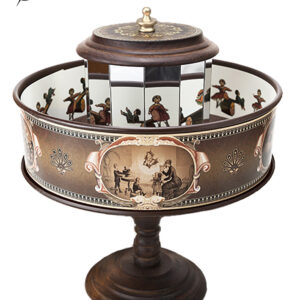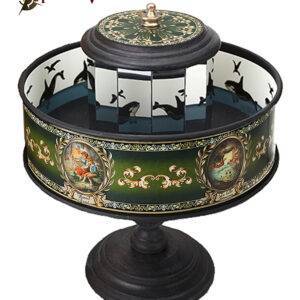ZOETROPE
Our zoetrope is handmade one by one using the materials used in its original manufacture.
HISTORY
In 1834, the English mathematician William George Horner built the zoetrope or daedaleum, also known as the “wheel of life,” because the first animated bands that were created represented animal movements.
Etymologically, it comes from the Greek zoo (life) and trope (movement).
Although the zoetrope did not provide any technical innovation with respect to the Plateau Phenakistiscope, it is much more manageable and allows several spectators, situated around its perimeter, to contemplate the scene.
FUNCTIONING
It is made up of a hollow cylinder perforated with several vertical slots (as many as the animation drawings presented in the band) and inside which it is placed attached to the wall of the cylinder. By rotating it on its axis and looking through the slots, the sequence of drawings, thanks to retinal persistence, is transformed into a single moving image.
OURS
Our zoetropes are a recreation of those from the 19th century. They are made of wood, metal or cardboard like the originals and are accompanied by 30 different bands, also a reproduction of the original animations with which these optical instruments were provided.
They have 30 different animations, a reproduction of those drawn at that time and it is not only perfect family entertainment, but also the best way to learn the physical principle of retinal persistence, thanks to which we can enjoy cinema, which all these instruments are precursors.
PRESENTATION
It comes with instructions for use and a brief historical review. It is presented in an illustrated cardboard box, perfect for making a beautiful gift for any age.
We have two models:
-French
-Art Deco
Measures:
Height:22cm
Drum diameter: 16.5cm
VAT INCLUDED
https://en.wikipedia.org/wiki/Zoetrope


